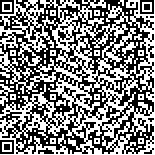武惠香,万桂芳,谢纯青,等.大脑皮质卒中后吞咽困难合并认知障碍患者的吞咽造影特征分析[J].中华物理医学与康复杂志,2020,42(1):18-23
扫码阅读全文

|
| 大脑皮质卒中后吞咽困难合并认知障碍患者的吞咽造影特征分析 |
|
| |
| DOI:DOI:10.3760/cma.j.issn.0254-1424.2020.01.005 |
| 中文关键词: 皮质卒中 认知障碍 吞咽障碍 吞咽造影 |
| 英文关键词: Stroke Cognitive impairment Dysphagia Videofluoroscopy Swallowing |
| 基金项目:基金项目:国家自然科学基金面上项目(81672256),广东省自然科学基金(2016A030313327),广东省残疾人事业理论与实践研究课题,广州市科技计划项目(201604020153),广州市科技计划项目(20160700185),广东省科技计划项目(2016A020215226) |
|
| 摘要点击次数: 6585 |
| 全文下载次数: 6877 |
| 中文摘要: |
| 目的 利用吞咽造影检查(VFSS)定性、定量分析大脑皮质卒中后吞咽困难合并认知障碍患者的吞咽的病理生理特征。 方法 选取大脑皮质卒中后吞咽困难合并认知障碍的患者16例作为观察组,将同期入选的大脑皮质卒中后认知功能正常的吞咽障碍患者16例和无吞咽障碍的健康中老年人分别设为非认知障碍对照组和正常对照组。采集3组受试者吞咽5 ml中稠度流质食物的VFSS,定性观察拒绝进食、张口困难、口腔闭合不全、口腔残留、咽腔残留、渗漏、误吸等情况的发生率。并采用吞咽造影数字化采集分析系统对三组受试者的时间学、运动学参数进行分析。 结果 定性分析显示,观察组拒绝进食的发生率(37.5%),口腔闭合不全的发生率(68.75%),高于正常对照组以及非认知障碍对照组(P<0.0167);观察组张口困难发生率(37.5%),口腔残留发生率(81.25%),咽腔残留发生率(56.25%),渗漏发生率(56.25%),误吸发生率(50%),高于正常对照组(P<0.0167)。定量分析显示,观察组口腔运送时间(6.87±2.55)s,软腭上抬时间(3.06±1.07)s,较正常对照组、非认知障碍对照组明显延长(P<0.05);观察组舌骨运动时间(1.21±0.19)s,较正常对照组明显延长(P=0.001),但与非认知障碍对照组比较,无明显延长(P=0.106)。 结论 大脑皮质卒中后吞咽困难合并认知障碍患者的吞咽功能受损以认知期受损为特征,伴较严重的口腔期受损。 |
| 英文摘要: |
| Objective To identify the pathophysiological characteristics of cortical stroke survivors′ swallowing. Methods Sixty cortical stroke survivors with dysphagia and cognitive impairment were enrolled into the observation group, while another 16 with dysphagia but without cognitive impairment formed the unimpaired control group and 16 healthy counterparts were selected for a normal control group. Each subject was recorded videofluoroscopically while swallowing 5ml of a liquid of medium consistency. The occurrence of refusing to eat, mouth opening difficulty, incomplete oral closure, residue in the oral cavity, residue in the pharyngeal cavity, leakage and aspiration were observed. Each subject′s swallowing time and kinematic parameters were analyzed from the fluoroscopic videos. Results The incidence of refusing to eat (37.5%) and/or incomplete mouth closure (68.75%) were significantly higher in the observation group than in the other two groups. The incidence of difficulty in opening the mouth (37.5%), residue in the oral cavity (81.25%), residue in the pharyngeal cavity (56.25%), leakage (56.25%) and aspiration (50%) of the observation group were significantly higher in the observation group than among the normal controls, but were not significantly different from those incidences among the group without cognitive impairment. The average oral transit time and soft palate elevation time of the observation group were significantly longer than those of the other two groups. The observation group′s average hyoid movement time was significantly longer than that of the normal control group, but not significantly different from that of the group without cognitive impairment. There were no significant differences among the groups in average upper esophageal sphincter opening time, larynx closure time or the kinematic parameters. Conclusions Stroke survivors with dysphagia and cognitive impairment present dysphagia characteristic of oral phase swallowing difficulties. |
|
查看全文
查看/发表评论 下载PDF阅读器 |
| 关闭 |
|
|
|